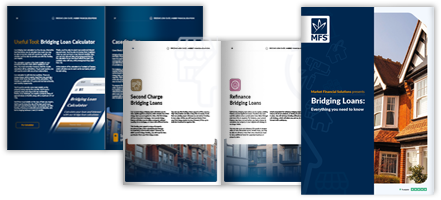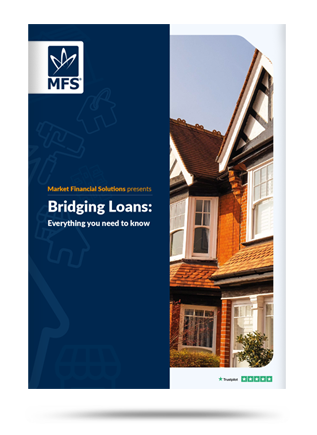Market Financial Solutions are a bridging loan and buy-to-let mortgage provider and are not legal, financial, investment or tax advisers. This document is for informational purposes only and does not, and should not be considered, to constitute legal, financial, investment or tax advice or be relied upon by any person to make a legal, financial, investment or tax decision. Therefore, Investors are encouraged to seek appropriate professional advice. The information in this content is correct at time of writing.

The difference between investor vs lender may seem self-evident. But some may view them as interchangeable terms. Also, while the basics may be obvious, there is a lot of variation at play within the details.
Generally, the difference between investor and lender lies in how funds are utilised.
What is an investor?
An investor is someone who puts money into an asset, aiming to get a return on their investment. This is usually done through one of two means (or a combination of both). Investors can aim to get a return through capital growth, which concerns a rise in the value of an asset over time. If an investor sells an asset for more than they invested, they’ll have benefited from a capital gain.
Investors can also seek returns through income. For property investment, this would take the form of rental income. In the equity market, dividends provide income for investors. The aim would be to generate enough income over time to cover (and eventually surpass) the initial investment. Often, capital gains and income generation strategies are combined. An example being a buy-to-let strategy, whereby an investor get income from tenants, and then sells the property down the line as it appreciates in value.
What is a lender?
Lenders, including specialist lenders, on the other hand provide loans – usually large sums of money – to another party for long-term repayment. Often, interest is added onto repayments to make the venture profitable for the lender involved. Loans and investments alike can be made to (and by) individuals and organisations.
While differing elements of the financial landscape, investments and loans often intermix. For instance, property investors can use loans to make an investment. So far, we’ve covered the basics of the difference between investor vs lender. But there are several elements, strategies and considerations that affects the lifecycle of any loan or investment. In this blog, we’ll dive into some of those details.

How are loans structured?
Personal loans tend to fall into one of two wider categories: secured or unsecured loans. Borrowers of secured loans will pledge an asset as collateral. This can include houses, cars, etc. Unsecured loans, by contrast, are not secured against an asset. A mortgage is a common secured loan, whereas consumer credit products such as credit cards and bank overdrafts tend to be unsecured.
Bridging loans are a secured product, which can then be split further into two sub-categories: regulated and unregulated. Regulated bridging loans allow recipients to live in a property they’re investing into. These loans tend to have rigid criteria in place, such as stringent affordability checks and loan-to-income evaluations.
Unregulated bridging loans are issued to those who are buying a property solely for investment purposes. Investors utilising an unregulated loan will not be able to live in a property they’re investing into. Unregulated loans tend to be more flexible and speedier, allowing investors to jump on opportunities quickly.
What about investments?
There is a lot of scope in how investments can be made. Investors can put money into property, equity, bonds, commodities or even cryptocurrency. Other tangible assets can also be considered an investment, such as artwork, jewellery, or fine wines.
There are many different strategies available to investors, especially in the equity market. Investors can aim to get a return from a momentum strategy, where people try to capitalize on a trend. On the flipside of this is value investing. Here, investors choose shares which appear to be trading for less than their intrinsic value, in the hope they’ll rise over time. In property, investment strategies can include fix-and-flip developments, commercial to residential conversions, or student-let targeting.
No matter how differently investors or lenders strategise however, both will be at the mercy of the wider economic climate. In recent years, the entire financial system had to adapt to an unforeseen global pandemic and its aftermath.
Investor vs lender – who is taking a hit from inflation and rising interest rates
While there is a clear difference between investor vs lender, both are affected by rising costs and supply issues. The Bank of England (BoE), along with other central banks, has gradually been raising interest rates in an attempt to get on top of rising inflation.
This raises costs for both businesses and investors. Debt is more expensive to service and cheap mortgage deals become scarce. We’ve already seen evidence of this in the market. Lenders have been pulling both residential and BTL mortgages from the shelves.
These realities add to a market already facing supply and demand pressures. Buyers and renters alike are competing over a dwindling supply of suitable properties. It’s believed that 300,000 homes need to be built every year to keep up with demand. However, the Government hasn’t hit this goal since at least the early 2000s.
The rental market is also struggling with a supply imbalance. Zoopla recently noted there is a “chronic” shortage of rental properties, particularly for simple one and two-bedroom flats. Indeed, Propertymark has warned the state’s plans for private rental reform could dwindle stocks even further.
As investors compete over limited supplies, they’ll want to make sure they’ve got the best form of lending behind them. High street banks appear fearful of what’s on the horizon. Rising costs and interest rates are making it harder for borrowers to deal with the mainstream. But, bridging finance thrives in an uncertain market. As lenders struggle to service property investors, specialist players can help fill a much-needed void.
Source: The Telegraph, Mortgage Solutions, The Telegraph, Mortgage Solutions, Propertymark, BBC, The Times
The Complete Guide to
Bridging Loans
Everything you need to know
- Different bridging types
- Useful tools
- Apply them in real life
- Market insights & more






